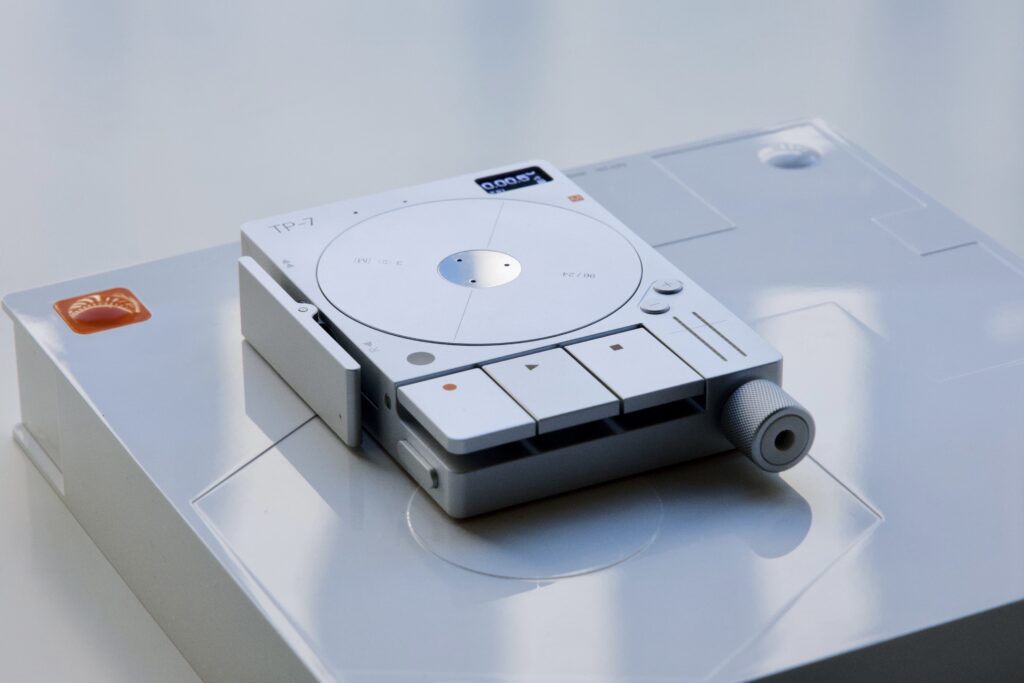Living with Parkinson’s disease can present daily challenges for seniors, but with the right strategies and support, it is possible to navigate through these difficulties. From managing symptoms to maintaining independence and quality of life, this article explores practical tips and advice tailored specifically for seniors with Parkinson’s. Discover how adapting daily routines, engaging in exercise and therapy, and accessing community resources can help individuals with Parkinson’s disease live fulfilling lives despite the challenges they may face.

This image is property of images.pexels.com.
Understanding Parkinson’s Disease
What is Parkinson’s Disease?
Parkinson’s Disease is a neurodegenerative disorder that affects the nerve cells in the brain responsible for controlling movement. It is a chronic and progressive condition, meaning that symptoms worsen over time. The main features of Parkinson’s Disease include tremors, bradykinesia (slowness of movement), rigidity, and difficulty with balance and coordination. In addition to these motor symptoms, individuals with Parkinson’s Disease may also experience non-motor symptoms such as cognitive changes, mood disorders, and sleep disturbances.
Causes and Symptoms of Parkinson’s Disease
The exact cause of Parkinson’s Disease is still unknown, but research suggests a combination of genetic and environmental factors may contribute to its development. While anyone can develop Parkinson’s Disease, it is more commonly seen in individuals over the age of 60. Some of the known risk factors for Parkinson’s Disease include family history, exposure to certain toxins, and certain genetic mutations.
The symptoms of Parkinson’s Disease can vary from person to person. The most common motor symptoms include tremors, stiffness, slowness of movement, and postural instability. However, non-motor symptoms such as depression, anxiety, cognitive changes, sleep disturbances, and gastrointestinal issues can also significantly impact daily life.
Impact of Parkinson’s Disease on Daily Life
Parkinson’s Disease can have a profound impact on daily life, making even the simplest tasks challenging. As the disease progresses, individuals may find it increasingly difficult to perform activities of daily living such as dressing, bathing, cooking, and driving. The motor symptoms can also affect mobility, leading to falls and difficulty with walking. Furthermore, the non-motor symptoms can significantly impact mood, cognition, and overall well-being. It is crucial to understand the various strategies and support systems available to seniors living with Parkinson’s Disease to help them navigate daily life more effectively.
Medical Management of Parkinson’s Disease
Medications for Parkinson’s Disease
Medications are an essential component of managing Parkinson’s Disease. The primary goal of these medications is to help control the symptoms and improve quality of life. There are several different types of medications available, and the choice of medication depends on the individual’s specific symptoms and needs. These medications primarily work by increasing levels of dopamine, a neurotransmitter that is depleted in individuals with Parkinson’s Disease. It is important to work closely with a healthcare professional to find the most suitable medication regimen and to understand potential side effects and interactions with other medications.
Surgical Treatments for Parkinson’s Disease
In some cases, when medications no longer provide sufficient symptom relief, surgical interventions may be considered. Deep brain stimulation (DBS) is a common surgical procedure for Parkinson’s Disease that involves implanting electrodes in specific regions of the brain. These electrodes are then connected to a stimulating device, which helps regulate abnormal nerve signals and reduce motor symptoms. DBS can significantly improve motor symptoms, but it is important to consider the risks and benefits before opting for surgery.
Physical Therapy and Rehabilitation
Physical therapy and rehabilitation play an integral role in managing Parkinson’s Disease. These interventions aim to improve mobility, balance, and overall physical function. A physical therapist can create a customized exercise program that includes strength training, balance exercises, and stretching to address specific needs and goals. Additionally, occupational therapy can help individuals adapt to changes in daily activities and suggest assistive devices to enhance independence.
Alternative and Complementary Therapies
In addition to conventional medical treatments, alternative and complementary therapies can also be beneficial for seniors with Parkinson’s Disease. These therapies, such as acupuncture, massage therapy, and yoga, can help manage symptoms, reduce stress, and improve overall well-being. It is important to discuss these options with a healthcare professional to ensure they are safe and appropriate.

This image is property of images.pexels.com.
Adapting the Living Environment
Creating a Safe and Accessible Home
Adapting the living environment is crucial for seniors with Parkinson’s Disease to ensure safety and accessibility. Simple modifications can greatly reduce the risk of falls and make daily tasks easier to perform. Some modifications may include installing handrails or grab bars in key areas, removing trip hazards, improving lighting, and ensuring furniture is arranged in a way that allows for smooth movement. It is important to assess the home environment and make necessary adjustments to promote independence and reduce the risk of accidents.
Assistive Devices and Adaptive Technologies
Assistive devices and adaptive technologies can greatly enhance independence for seniors with Parkinson’s Disease. These devices are designed to assist with various tasks and address specific challenges associated with the disease. Examples of assistive devices include walking aids such as canes or walkers, devices to assist with dressing or eating, and voice-activated technologies to control household appliances. Working with a healthcare professional or occupational therapist can help identify the most appropriate devices and technologies for individual needs.
Modifying Daily Activities for Parkinson’s Disease
Modifying daily activities can help seniors with Parkinson’s Disease maintain a sense of control and independence. Breaking tasks into smaller steps, prioritizing important activities, and allocating extra time can reduce stress and frustration. Additionally, focusing on energy conservation techniques, such as sitting down while performing tasks, can help manage fatigue and conserve energy. It is important to listen to your body and make adjustments as needed to accommodate changes in physical abilities.
Cognitive and Emotional Challenges
Dealing with Cognitive Changes
Cognitive changes are common in Parkinson’s Disease and can include difficulties with memory, attention, and executive function. It is important to develop strategies to cope with these changes and maintain cognitive function. Engaging in activities that challenge the brain, such as puzzles or reading, can help keep the mind sharp. Additionally, utilizing memory aids, organizing information, and practicing mindfulness can all contribute to managing cognitive changes effectively. It is crucial to seek support from healthcare professionals, as they can provide valuable guidance and resources.
Managing Emotional Well-being
Parkinson’s Disease can bring about emotional challenges, such as depression and anxiety. It is essential to prioritize emotional well-being and seek appropriate support. Engaging in activities that bring joy and purpose, maintaining social connections, and participating in support groups can all contribute to emotional well-being. Additionally, practicing stress management techniques, such as deep breathing exercises or meditation, can help reduce anxiety and improve overall mood. It is important to communicate openly with healthcare professionals and loved ones about any emotional struggles experienced.
Tips for Enhancing Mental Functioning
There are several strategies seniors with Parkinson’s Disease can employ to enhance mental functioning. Staying mentally active by engaging in stimulating activities, such as learning new skills or hobbies, can help maintain cognitive abilities. Developing a routine and sticking to it can also help with memory and organization. Additionally, maintaining a healthy lifestyle, including regular exercise, proper nutrition, and sufficient sleep, can all contribute to optimal brain function.

This image is property of images.pexels.com.
Maintaining a Healthy Lifestyle
Importance of Exercise for Parkinson’s Disease
Regular exercise is essential for seniors with Parkinson’s Disease to help manage symptoms and maintain overall health. Exercise can improve mobility, balance, and coordination, as well as enhance mood and cognitive function. Engaging in a variety of activities, such as walking, swimming, or yoga, can provide physical and mental benefits. It is important to work with a healthcare professional or physical therapist to develop a safe and appropriate exercise program tailored to individual needs and abilities.
Nutrition and Diet Recommendations
Proper nutrition is vital for individuals with Parkinson’s Disease to support overall health and manage symptoms. A well-balanced diet rich in fruits, vegetables, whole grains, and lean proteins can provide essential nutrients and support optimal brain function. It is also important to stay hydrated and limit the consumption of processed foods and sugary snacks. Working with a registered dietitian can help develop a personalized nutrition plan that addresses individual needs and dietary restrictions.
Sleep and Parkinson’s Disease
Sleep disturbances are common in Parkinson’s Disease and can significantly impact daily functioning and overall well-being. Establishing a regular sleep routine, creating a sleep-friendly environment, and practicing relaxation techniques before bedtime can improve sleep quality. It is important to discuss any sleep issues with a healthcare professional, as they may recommend medications or other interventions to address sleep disturbances.
Stress Management Techniques
Managing stress is crucial for seniors with Parkinson’s Disease, as stress can worsen symptoms and impact overall health. Engaging in stress-reducing activities such as yoga, meditation, deep breathing exercises, or hobbies can help alleviate stress and promote relaxation. Building a support network, seeking professional counseling, and practicing self-care are also effective strategies for managing stress. It is important to prioritize stress management and find techniques that work best for individual needs.
Support Systems for Seniors with Parkinson’s Disease
Building a Support Network
Building a support network is essential for seniors with Parkinson’s Disease to navigate daily life more effectively. Support can come from family members, friends, healthcare professionals, and support groups. It is important to communicate openly with loved ones about needs and challenges to ensure they can provide the necessary support. Support networks can offer emotional encouragement, practical assistance, and valuable information about available resources and services.
Caregiver Assistance and Respite Care
Caregivers play a vital role in supporting seniors with Parkinson’s Disease. They assist with daily activities, provide emotional support, and ensure medications and appointments are managed effectively. It is important for caregivers to prioritize self-care and seek assistance when needed. Respite care services, where trained professionals provide temporary relief for caregivers, can be beneficial to prevent burnout and ensure the well-being of both the caregiver and the individual with Parkinson’s Disease.
Support Groups for Parkinson’s Disease
Support groups provide a space for individuals with Parkinson’s Disease and their caregivers to connect, share experiences, and learn from one another. These groups offer emotional support, practical advice, and valuable resources. Joining a support group can provide individuals with Parkinson’s Disease a sense of community and understanding. It is important to seek out local support groups or online communities that are focused on Parkinson’s Disease to access these valuable resources.

This image is property of images.pexels.com.
Managing Medications and Appointments
Tips for Organizing Medications
Managing medications can be challenging for seniors with Parkinson’s Disease due to potential memory and dexterity issues. It is crucial to establish a medication management system to ensure medications are taken correctly and consistently. Some tips for organizing medications include using pill organizers, setting reminders on electronic devices, and creating a medication schedule. It is also essential to keep an updated list of medications and any allergies or adverse reactions to share with healthcare professionals.
Managing Doctor Appointments
Regular doctor appointments are essential for seniors with Parkinson’s Disease to monitor symptoms, adjust medications, and receive necessary support. Keeping track of appointments and communicating effectively with healthcare professionals is crucial. It can be helpful to maintain a calendar or digital reminder system to stay organized. Additionally, preparing a list of questions or concerns ahead of time can ensure that all necessary topics are discussed during appointments.
Importance of Regular Check-ups
Regular check-ups with healthcare professionals, including primary care physicians, neurologists, and therapists, are crucial for seniors with Parkinson’s Disease. These check-ups allow for continuous monitoring of the disease progression, assessment of symptoms, and adjustment of treatment plans. It is important to prioritize regular check-ups to address any changes in symptoms or overall health promptly. Open communication with healthcare professionals can ensure the best possible care and management of the disease.
Driving and Transportation Considerations
Evaluating Driving Abilities
Driving abilities can be affected by Parkinson’s Disease, making it crucial to evaluate driving skills regularly. It is important to be aware of any changes in reaction time, coordination, or cognitive function that may impact safe driving. Consulting with a healthcare professional or occupational therapist who specializes in driving rehabilitation can provide objective assessments and recommendations. It may be necessary to transition to alternative transportation options if driving becomes unsafe.
Alternative Transportation Options
When driving is no longer a safe option, alternative transportation options should be considered. Public transportation, such as buses or trains, can be a convenient and cost-effective option for seniors with Parkinson’s Disease. Additionally, rideshare services, community transportation programs, and volunteer driver programs can provide reliable transportation when needed. Exploring these options and planning transportation ahead of time can help maintain independence and accessibility.
Navigating Public Transportation
Navigating public transportation with Parkinson’s Disease may require some additional planning and support. It can be helpful to familiarize yourself with the routes, schedules, and accessibility features of public transportation in your area. If necessary, reaching out to transportation providers to inquire about any accommodations that may be available can ensure a smooth and comfortable journey. Additionally, considering the use of assistive devices or adaptive technologies, such as mobility aids or apps for trip planning, can enhance confidence and independence when using public transportation.

This image is property of images.pexels.com.
Maintaining Independence and Autonomy
Assistive Devices for Independence
Assistive devices can greatly enhance independence and autonomy for seniors with Parkinson’s Disease. There are a variety of devices available that cater to different needs, such as mobility aids, adaptive utensils, and voice-activated technology. These devices can help individuals with Parkinson’s Disease perform daily tasks more easily and efficiently. It is important to work with healthcare professionals or occupational therapists to identify the most suitable assistive devices and receive proper training on their use.
Adaptive Strategies for Daily Tasks
Adaptive strategies involve modifying the way tasks are performed to accommodate changes in physical abilities. These strategies can help seniors with Parkinson’s Disease maintain independence and successfully complete daily tasks. For example, breaking down tasks into smaller steps, using assistive devices when necessary, and taking frequent breaks can all make activities more manageable. Occupational therapists can provide valuable guidance and train individuals on adaptive strategies that align with their specific needs and goals.
Assisted Living vs. Aging in Place
As Parkinson’s Disease progresses, individuals may face the decision of whether to transition into assisted living or continue aging in place. Assisted living facilities can provide a supportive environment with staff available to assist with daily activities and healthcare needs. Aging in place allows individuals to remain in their own homes while receiving support from caregivers, family, and community services. The choice between assisted living and aging in place depends on personal preferences, level of support required, and available resources. It is important to consider factors such as safety, social support, and access to healthcare when making this decision.
Planning for the Future
Legal and Financial Considerations
Planning for the future is essential for seniors with Parkinson’s Disease to ensure their wishes are honored and their affairs are in order. It is important to establish legal documents such as a durable power of attorney, a healthcare proxy, and a living will. These documents outline who will make decisions on your behalf and the type of medical care you wish to receive. Additionally, financial planning, including creating a budget, reviewing insurance policies, and considering long-term care options, can provide peace of mind and financial security.
Long-Term Care Planning
Long-term care planning involves assessing and preparing for future care needs as the disease progresses. It is essential to explore different long-term care options such as home care, assisted living, or skilled nursing facilities. Long-term care insurance may also be a consideration to help cover the costs of care. It is crucial to start planning early and involve loved ones in the decision-making process to ensure preferences and wishes are taken into account.
Documenting Preferences and Wishes
Documenting preferences and wishes is an important aspect of planning for the future with Parkinson’s Disease. An advance care directive, which includes a living will and a healthcare proxy, allows individuals to specify their medical care preferences and appoint someone to make decisions on their behalf. Additionally, discussing end-of-life wishes with loved ones can ensure that these wishes are known and respected. It is essential to revisit and update these documents regularly as circumstances or preferences change.
In conclusion, seniors with Parkinson’s Disease can navigate daily life more effectively by understanding the disease, managing medical treatments, adapting their environment, addressing cognitive and emotional challenges, maintaining a healthy lifestyle, building a support network, managing medications and appointments, considering transportation options, maintaining independence and autonomy, and planning for the future. By employing strategies and accessing available resources, seniors with Parkinson’s Disease can continue to lead fulfilling lives and maintain optimal well-being.
